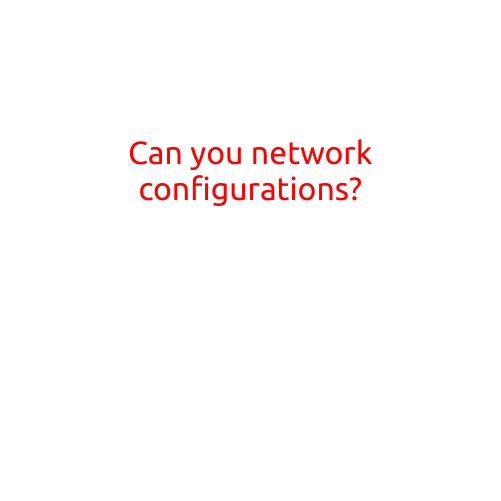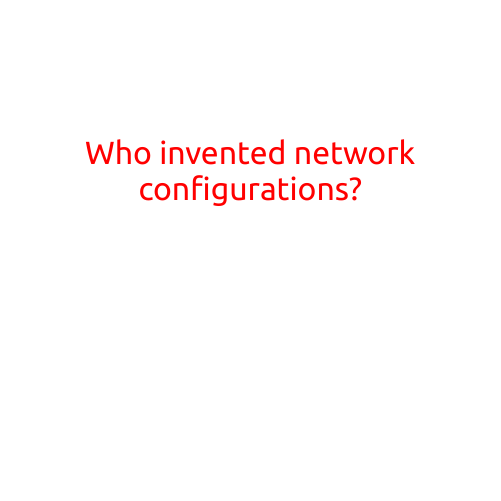
Can You Network Configurations?
In today’s digital age, networking plays a crucial role in connecting devices, sharing resources, and facilitating communication. Whether you’re a IT professional, a student, or a mere enthusiast, understanding network configurations is essential to ensure efficient and secure communication on your network.
In this article, we’ll explore the various types of network configurations, their significance, and the tools required to configure them.
What is Network Configuration?
Network configuration refers to the process of setting up and customizing networking protocols, devices, and policies to ensure proper communication between devices on a network. It involves configuring settings such as IP addresses, subnet masks, default gateways, DNS servers, and more.
Types of Network Configurations
There are several types of network configurations, including:
- LAN (Local Area Network) Configuration: Configuring a LAN involves setting up devices, such as routers, switches, and servers, to communicate with each other within a limited geographic area, usually a building or campus.
- WAN (Wide Area Network) Configuration: Configuring a WAN involves setting up devices, such as routers and servers, to communicate with each other over a larger geographic area, often spanning multiple sites or cities.
- Wireless Network Configuration: Configuring a wireless network involves setting up wireless devices, such as access points and routers, to communicate with each other and devices using Wi-Fi.
- Virtual Private Network (VPN) Configuration: Configuring a VPN involves setting up a secure, encrypted connection between devices over the internet, allowing users to access remote networks as if they were local.
Why is Network Configuration Important?
Network configuration is crucial for several reasons:
- Security: Proper network configuration helps prevent unauthorized access, data breaches, and other security threats.
- Performance: Network configuration can impact network speed, reliability, and scalability.
- Interoperability: Proper network configuration ensures that devices from different manufacturers and operating systems can communicate effectively.
- Troubleshooting: Proper network configuration makes it easier to diagnose and resolve network issues.
Tools for Network Configuration
To configure networks, various tools are used, including:
- Command-Line Interface (CLI): A CLI is used to configure devices using commands and scripts.
- Graphical User Interface (GUI): A GUI is used to configure devices using graphical tools and wizards.
- Network Management Software: Software, such as Cisco’s Network Assistant, is used to monitor and configure networks.
- Scripts and Automation Tools: Scripts and automation tools, such as Python and PowerShell, are used to automate network configuration tasks.
Conclusion
Network configuration is a critical aspect of networking that ensures efficient, secure, and reliable communication. By understanding the different types of network configurations and the tools used to configure them, you can troubleshoot and resolve network issues, improve network performance, and enhance network security.
Whether you’re a seasoned IT professional or a networking novice, mastering network configuration is essential in today’s digital age.





